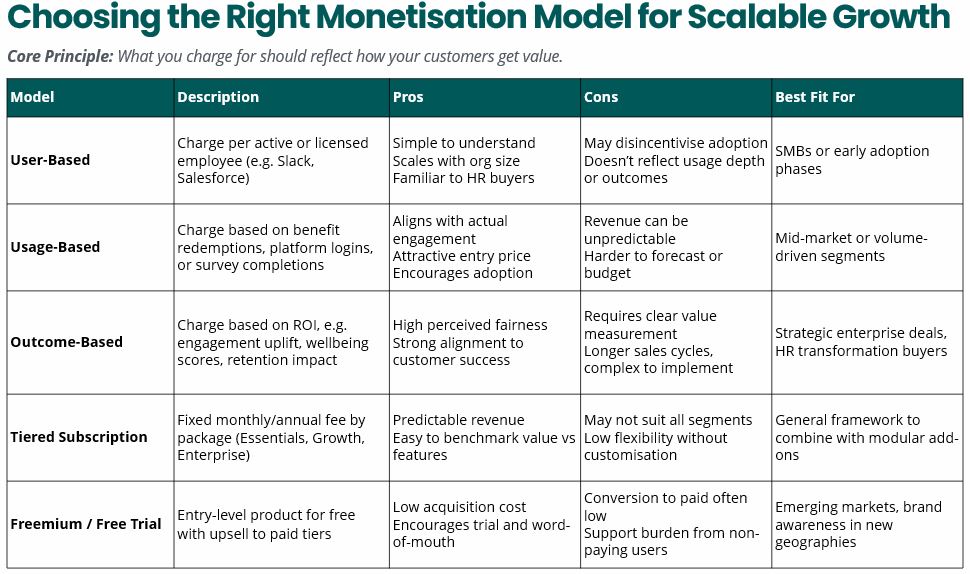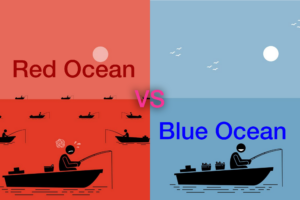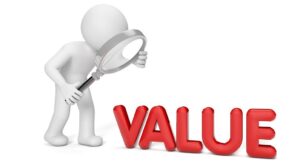
Choosing the right pricing model can often be confusing, given the vast number of options to choose from, but it can also make or break your SaaS business!
Getting it right makes the difference between building a scalable business with profitable growth and joining the ranks of the 18% of startups that fail due to poor pricing strategy.
In this blog, we will explore the pros and cons of the different pricing models so that hopefully you can make a more informed choice.
1. Flat-Rate Pricing
The Simplicity Play
Flat-rate pricing offers a single price for all features, users, and usage levels. It’s straightforward and easy to understand.
Pros:
- Clarity: Customers immediately know what they’re paying for.
- Predictability: Simplifies budgeting for both the customer and the company.
- Ease of Implementation: Minimal complexity in billing systems.
Cons:
- Inflexibility: Doesn’t cater to varying customer needs or usage patterns.
- Limited Upselling Opportunities: Harder to expand revenue from existing
customers.
Best For: Early-stage startups with a homogeneous customer base and a straightforward value proposition.
2. Usage-Based Pricing
Pay-As-You-Grow
This model charges customers based on their actual usage,
aligning costs with value received.
Pros:
- Alignment with Value: Customers pay in proportion to their usage.
- Scalability: Revenue grows as customer usage increases.
- Accessibility: Lower entry barriers for new customers.
Cons:
- Revenue Predictability: Fluctuating usage can lead to unpredictable revenue streams.
- Complexity in Billing: Requires robust tracking and billing systems.
Best For: Infrastructure or platform services with variable customer usage patterns.
3. Tiered Pricing
Segmented Value
Offering multiple pricing tiers caters to different customer segments, each with varying needs and budgets.
Pros:
- Customer Choice: Allows customers to select a plan that fits their needs.
- Upselling Opportunities: Encourages customers to move to higher tiers as their needs grow.
- Revenue Optimisation: Maximises value extraction across diverse customer segments.
Cons:
- Complexity: Requires careful structuring to avoid customer confusion.
- Potential for Misalignment: Poorly designed tiers can lead to customers feeling underserved or overcharged.
Best For: SaaS companies with a broad customer base and varying usage patterns.
4. Per-User Pricing
Scaling with Teams
Charging based on the number of users accessing the software aligns pricing with team size.
Pros:
- Transparency: Easy for customers to understand and budget.
- Scalability: Revenue grows as customers add more users.
Cons:
- Limitations: May discourage adoption in larger teams due to cost.
- Workarounds: Risk of users sharing accounts to minimize costs.
Best For: Collaboration tools or platforms where value scales with the number of users.
5. Feature-Based Pricing
Pay for What You Use
Customers pay for specific features they need, allowing for customisation.
Pros:
- Flexibility: Customers tailor the product to their needs.
- Upselling Opportunities: Easy to introduce new features as add-ons.
Cons:
- Complexity: Managing numerous feature combinations can be challenging.
- Overwhelm: Customers may find too many choices confusing.
Best For: Products with modular features catering to diverse use cases.
6. Freemium Model / Free Trials
Try Before You Buy
Offering a basic version of your product for free can attract a wide user base.
Pros:
- User Acquisition: Lowers the barrier to entry.
- Product-Led Growth: Users experience value before committing financially.
Cons:
- Conversion Challenges: Not all free users will convert to paying customers.
- Support Costs: Free users still require support and resources.
Best For: Products with a strong value proposition that becomes evident through usage, leading to paid conversion.
7. Value-Based Pricing
Pricing Aligned with Perceived Value
Setting prices based on the value your product delivers ensures alignment with customer expectations.
Pros:
- Profit Maximisation: Capture more value from customers who derive significant benefits.
- Customer Alignment: Pricing reflects the outcomes customers care about.
Cons:
- Research Intensive: Requires a deep understanding of customer value perception.
- Dynamic: Value perceptions can change, necessitating ongoing adjustments.
Best For: Mature products with clear, measurable outcomes for customers.
Strategic Takeaways
- Understand Your Customers: Align pricing models with how your customers perceive and derive value.
- Flexibility is Key: Be prepared to adapt your pricing strategy as your product and market evolve.
- Test and Iterate: Regularly assess the effectiveness of your pricing model and make data-informed adjustments.
Remember, pricing is not a one-time decision but an ongoing strategy that should evolve with your business and customer needs.

FAQs
What are the most effective pricing models for B2B SaaS?
Flat-rate, tiered, per-user, usage-based, and hybrid models – each has pros and cons depending on your business objectives, stage of lifecycle, ICP and value delivery.How do I know if my pricing model is working?
Look for leading indicators: LTV/CAC ratios, payback, conversion rates, expansion revenue, churn, customer satisfaction scores and feedback.Why should I trust Biz Growth Spurt with my pricing strategy?
We’ve helped scale pricing for over 15 B2B SaaS businesses with a proven playbook focused on revenue acceleration and product-market fit.How often should I revisit my pricing model?
At least once every 6 to 9 months, or any time you launch new features, enter new markets, or see changes in customer behaviour.Can I get a personalised pricing audit?
Yes – book a free consult and we’ll benchmark your pricing strategy against industry best practices.






